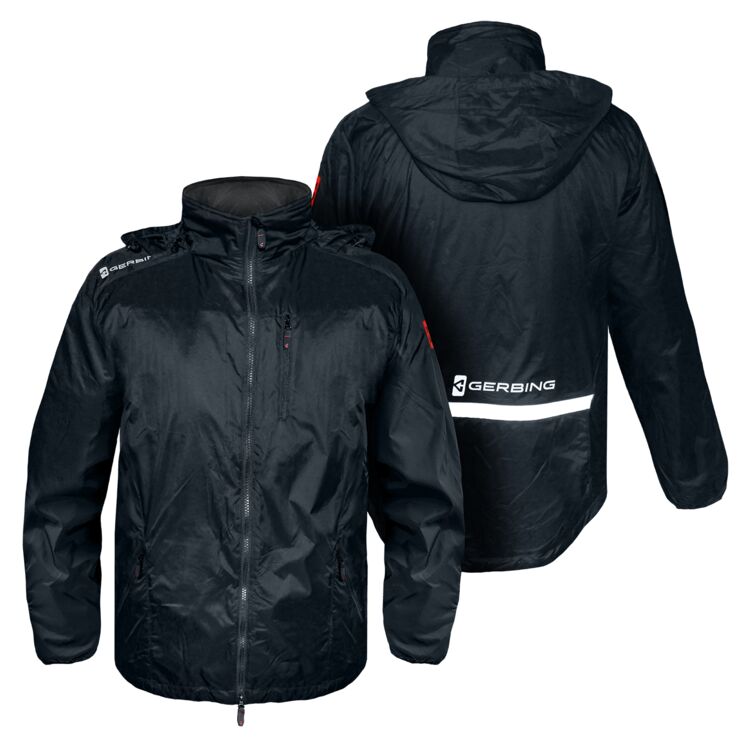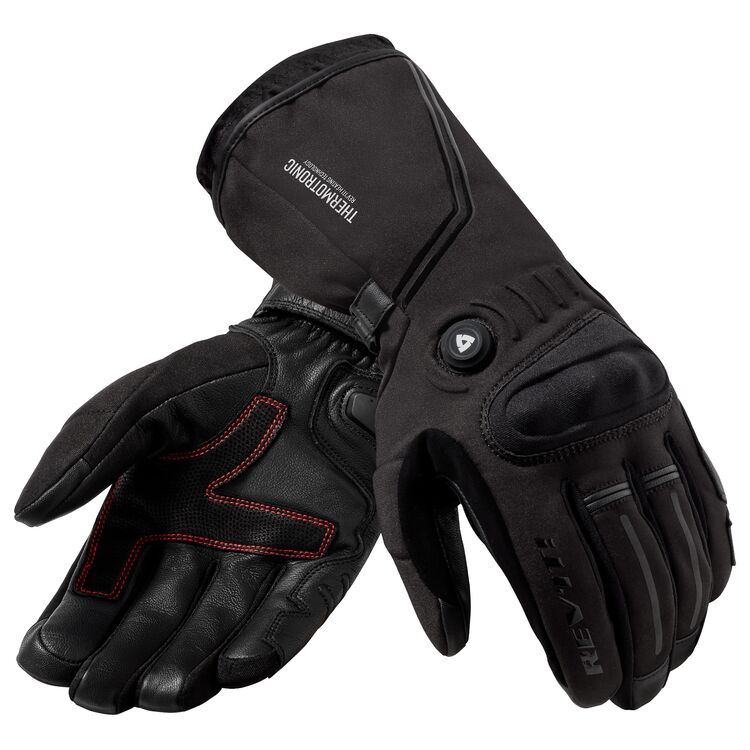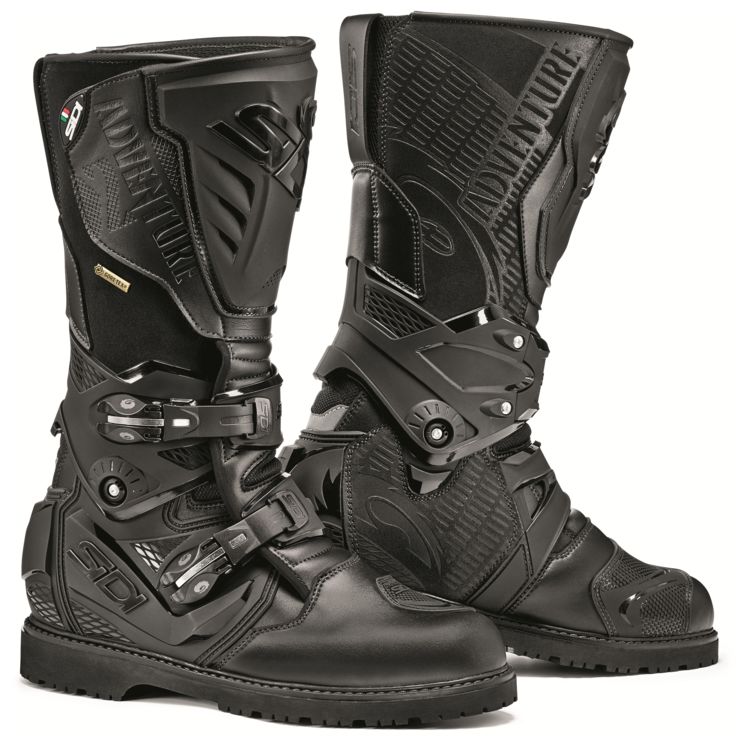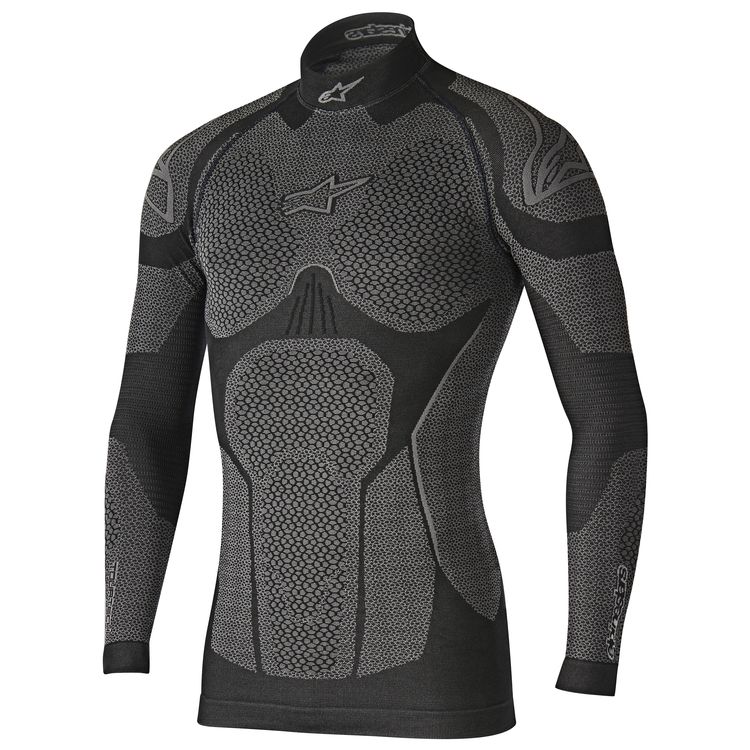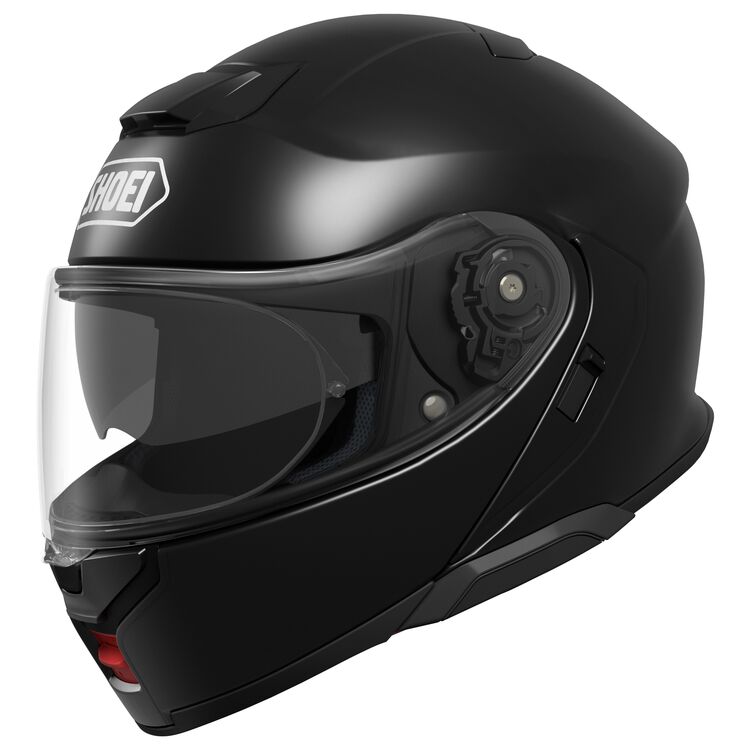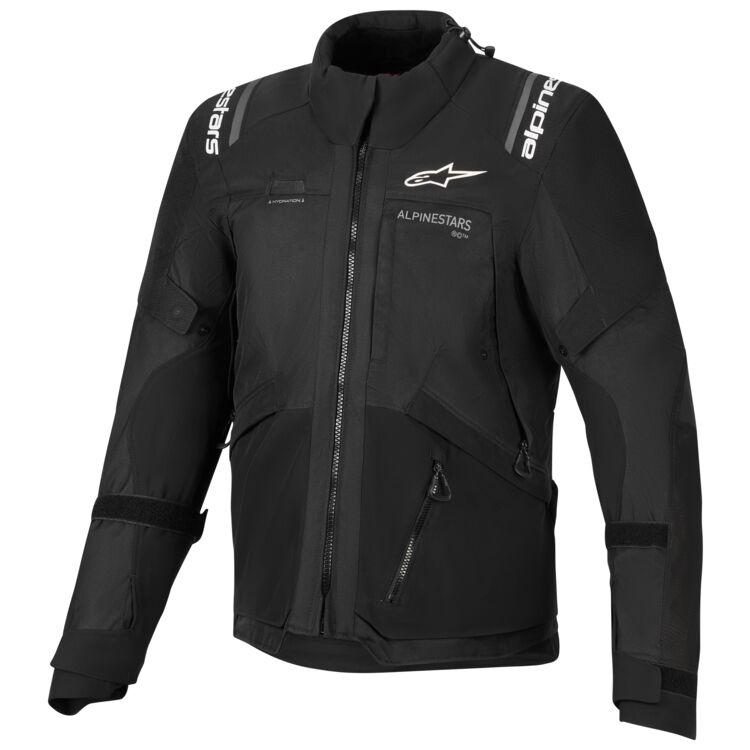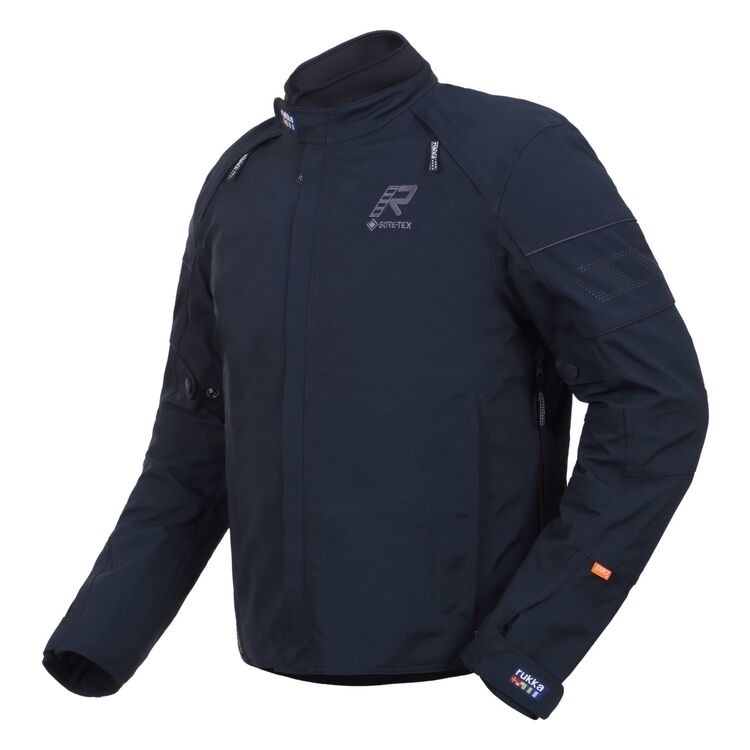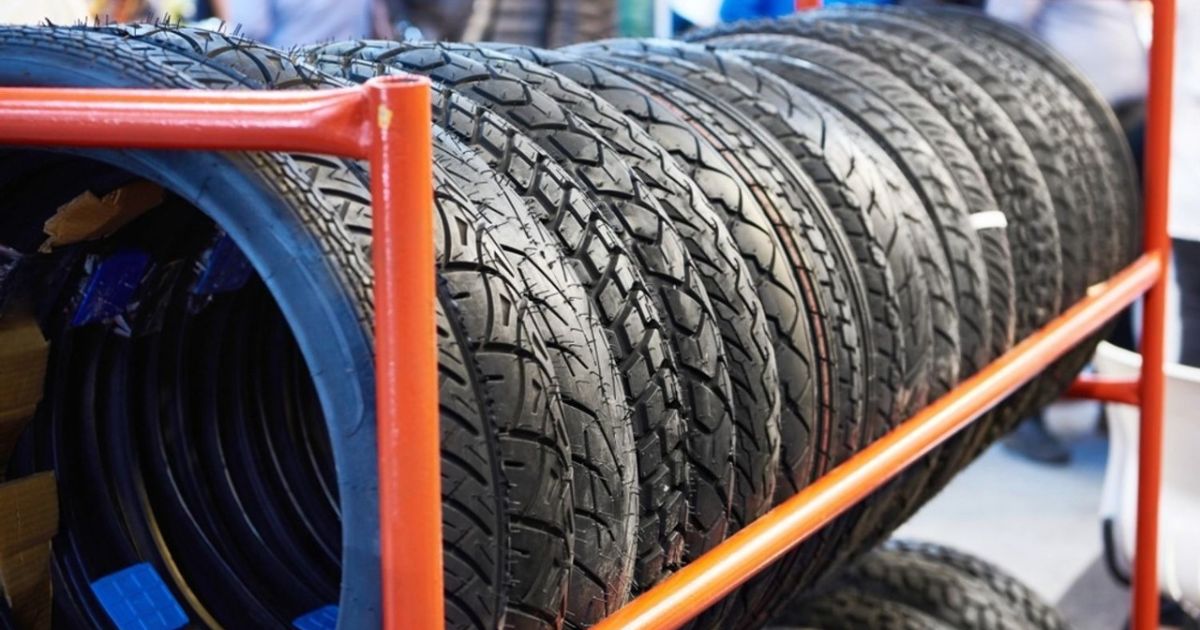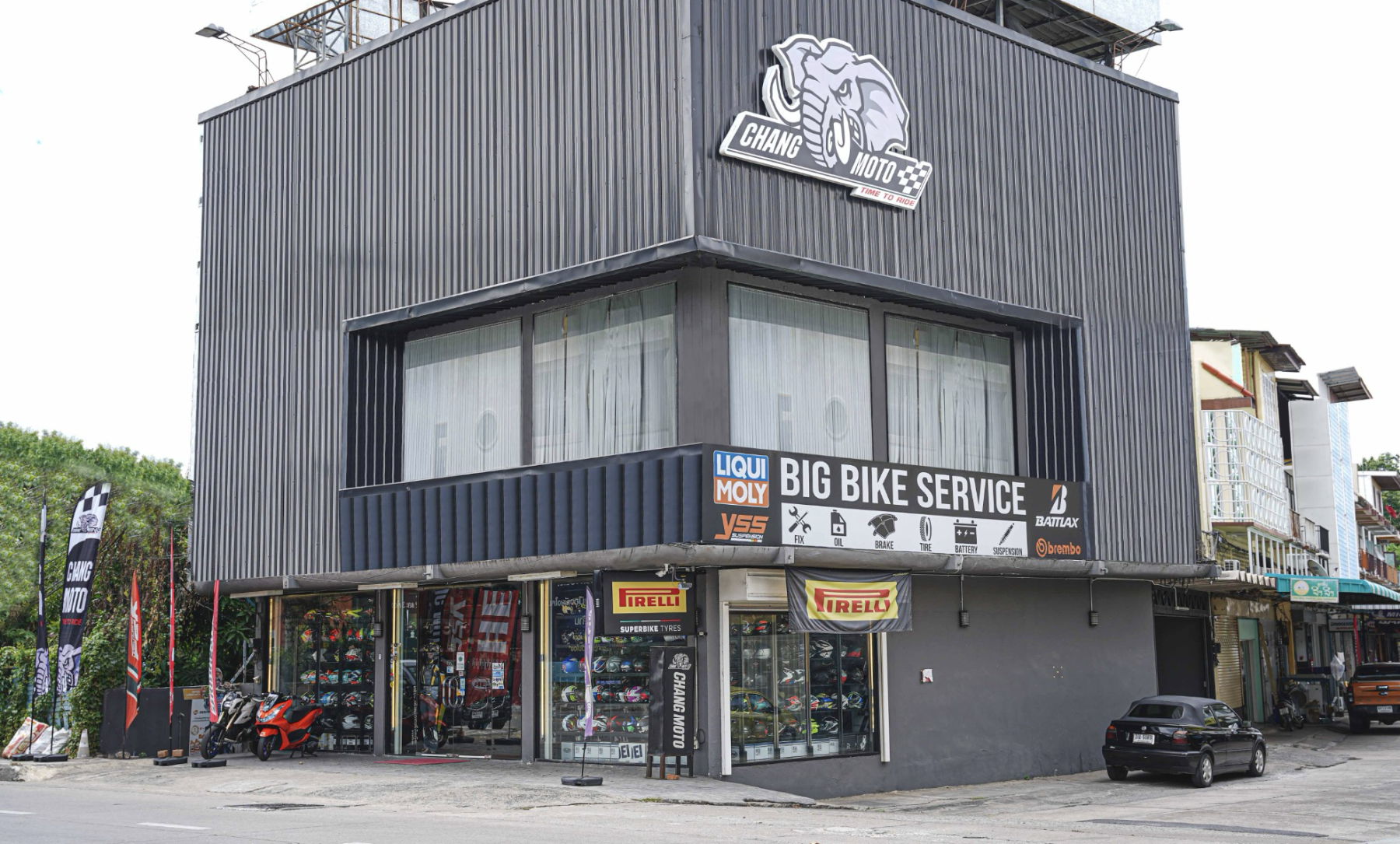
Ride a Motorcycle in Winter? Stay Warm and Safe — Here’s How
left for contents
There’s something undeniably satisfying about punching through a frozen sunrise on two wheels while everyone else is stuck in cars. But there’s also a fine line between enjoying winter’s quiet beauty and putting yourself in unnecessary danger.
Many riders assume cold weather automatically means parking the bike until spring. You don’t have to. With the right gear, preparation, and mindset, winter riding can be fun, comfortable and surprisingly serene.
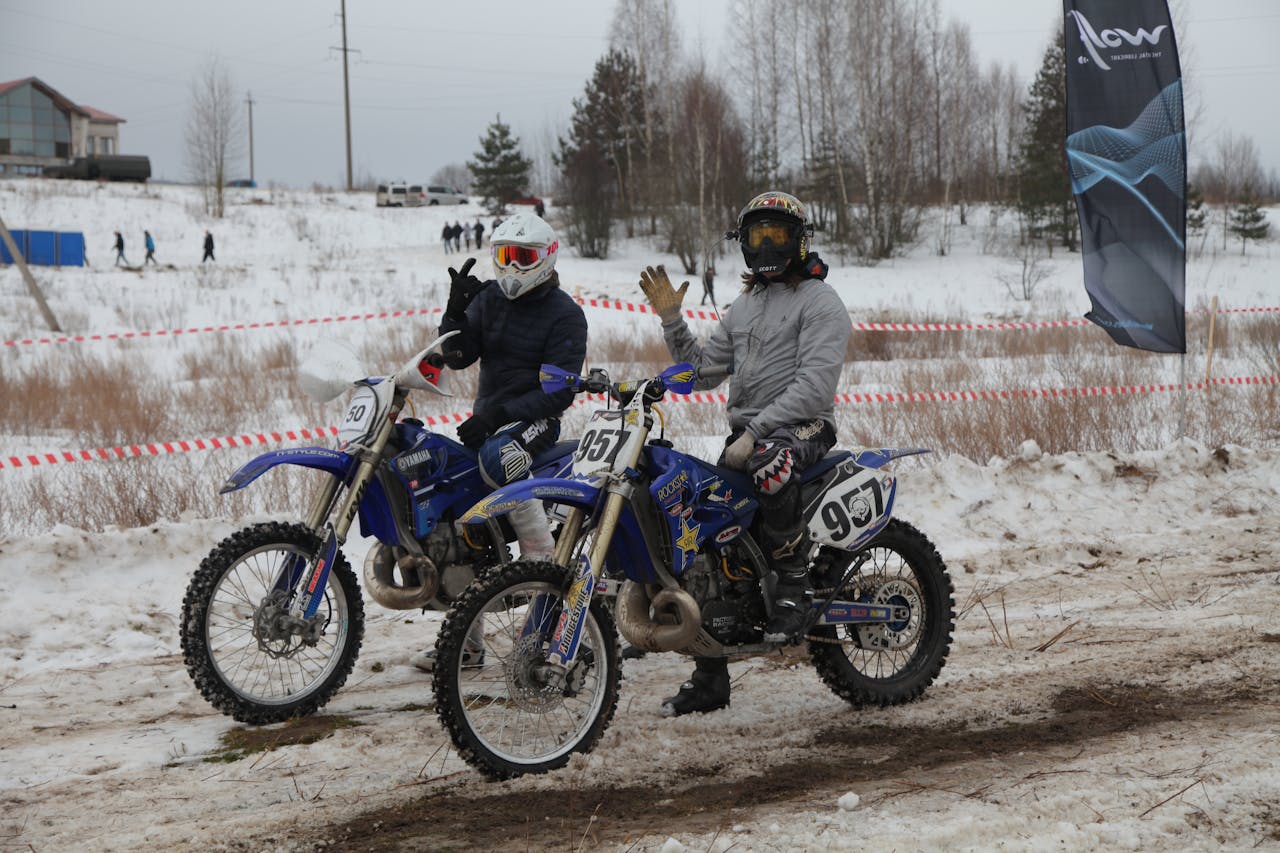
If you’ve ever been told that “riding in winter will destroy your bike,” you’ve heard one of the biggest myths in our world. Proper winter maintenance actually helps your machine last longer. Or maybe a friend insisted that “no heated gear is powerful enough to cope with real cold.” Tell that to the riders crossing Canada in January with toasty fingers. And if someone claims “full‑face helmets fog up so you can’t see in winter,” they’re simply using the wrong lid. Riding through January is perfectly doable when you dress smart, understand your limits and choose gear that matches your ride.
We’ll share the main things to know before venturing out in icy conditions and highlight some of the best gear currently available.
Let’s warm up.
What Makes Winter Riding Different?
Before filling your cart with gear, it helps to understand why cold riding is so demanding.
Low temperatures steal heat from your body faster than you can generate it, which can reduce reaction times and lead to numbness in fingers and toes. Road conditions also change; even a thin sheen of ice or frost can cut tire grip dramatically. Metal grate bridges, tar snakes, and painted road markings become slick as snot when the mercury drops.
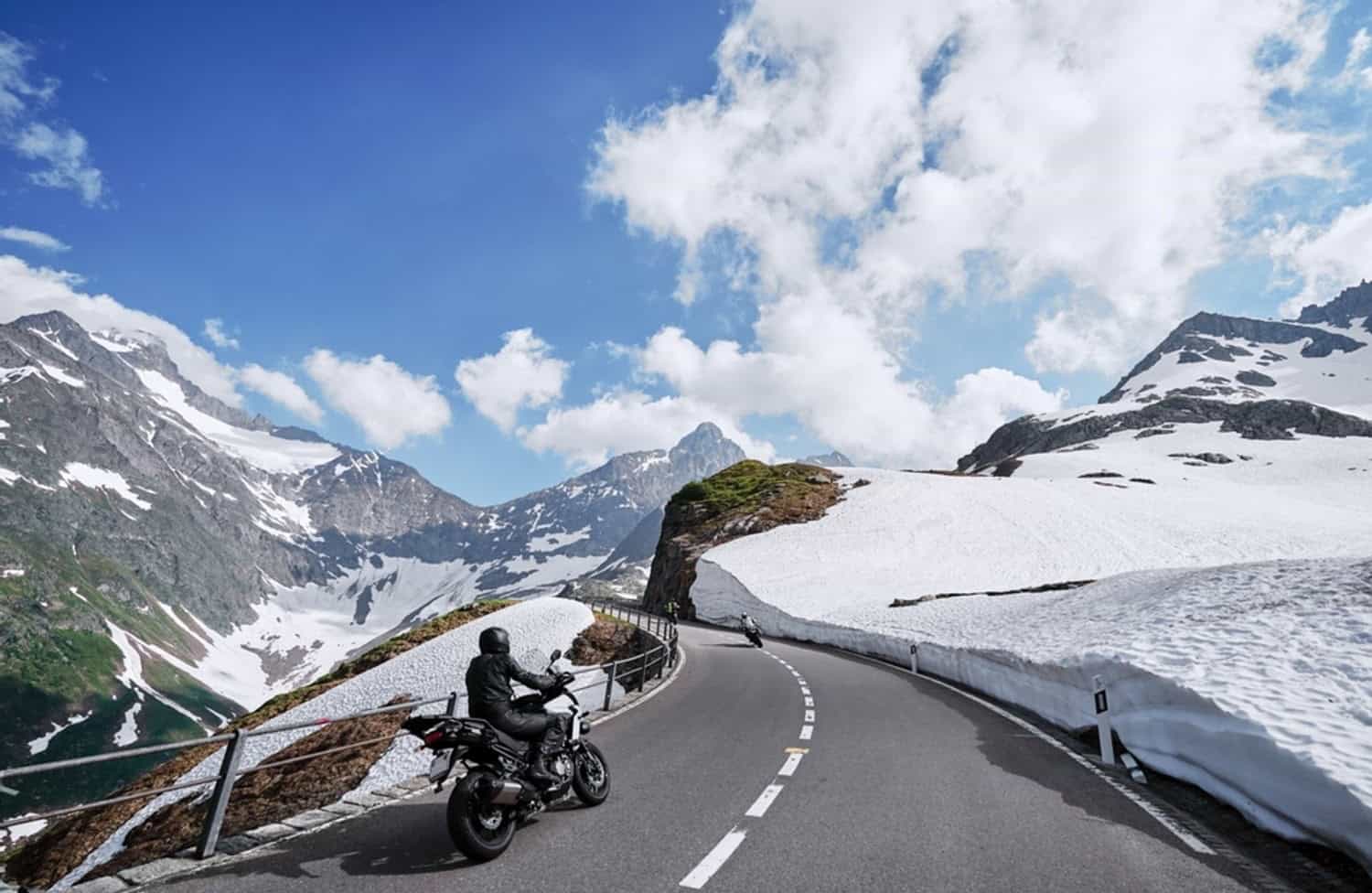
Visibility is another major challenge. Short days mean you’re riding in twilight more often, and rain or fog can make oncoming drivers overlook you. That’s why many winter riders invest in LED auxiliary lighting and reflective gear. Finally, your motorcycle itself reacts differently: cold tires take longer to warm up, lubricants thicken, and batteries lose cranking power.
Luckily, most of these issues are manageable. A few extra minutes of pre‑ride checks, choosing the right line through corners and maintaining a relaxed pace go a long way. The rest comes down to gear.
Gear Up: What to Wear for Winter Riding
Layer Like a Pro
When temperatures plummet, layering is your friend. Start with a moisture‑wicking base layer to keep perspiration away from your skin; synthetic fabrics or merino wool are ideal. Avoid cotton — once damp it stays that way and makes you cold. On top of that goes an insulating mid‑layer. Fleece or modern thermal jackets trap warm air without adding too much bulk. The outer layer should be windproof and waterproof to block cold air and precipitation; a good riding jacket or over‑suit does this.
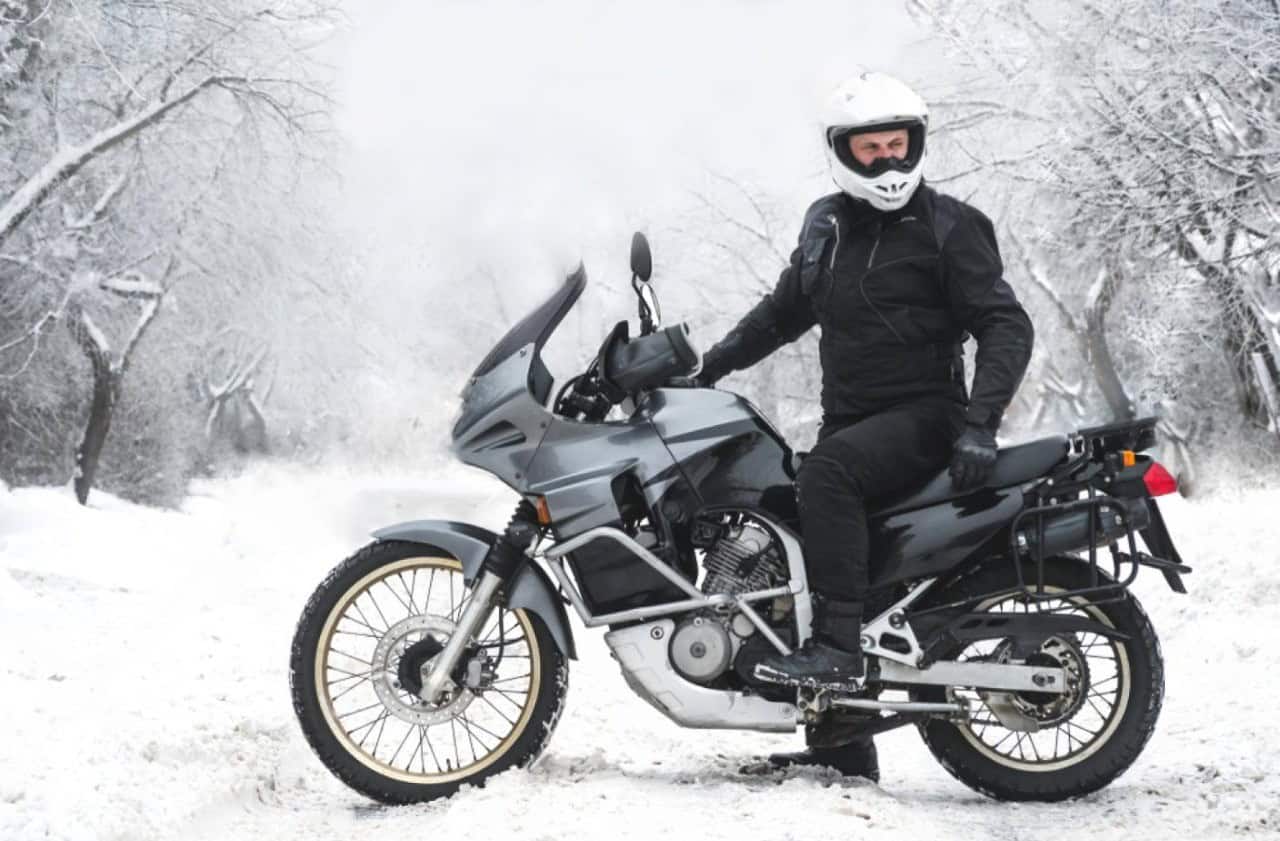
Thermal neck tubes and balaclavas protect the often‑neglected neck and lower face. Thick socks and quality boots keep your feet warm, while heated grips or gloves maintain dexterity. Insulated, waterproof gloves that reach past the wrist and have a snug closure stop wind from sneaking up your sleeves.
Prepare the Bike
Winter prep doesn’t end at your wardrobe. Switch to winter‑appropriate tires if you live in a region that sees snow and ice; specialized compounds and tread patterns maintain grip in cold temps. Check your coolant and brake fluid levels, and consider a lower‑viscosity oil if your manufacturer recommends it for cold weather. Batteries hate cold, so keep yours fully charged. Finally, invest in a good chain lube that won’t thicken and a can of dielectric grease for electrical connectors to prevent corrosion from road salt.
Know Your Limits
No gear on earth will make it safe to ride through a blizzard or black ice. Always check the forecast; if there’s a storm on the way, leave the bike in the garage. Lower your speed, increase following distances, and avoid sudden inputs. Pay extra attention to metal surfaces, manhole covers, tar patches and salt or sand on the road, as they’re far slicker than asphalt. When in doubt, choose safety over pride.
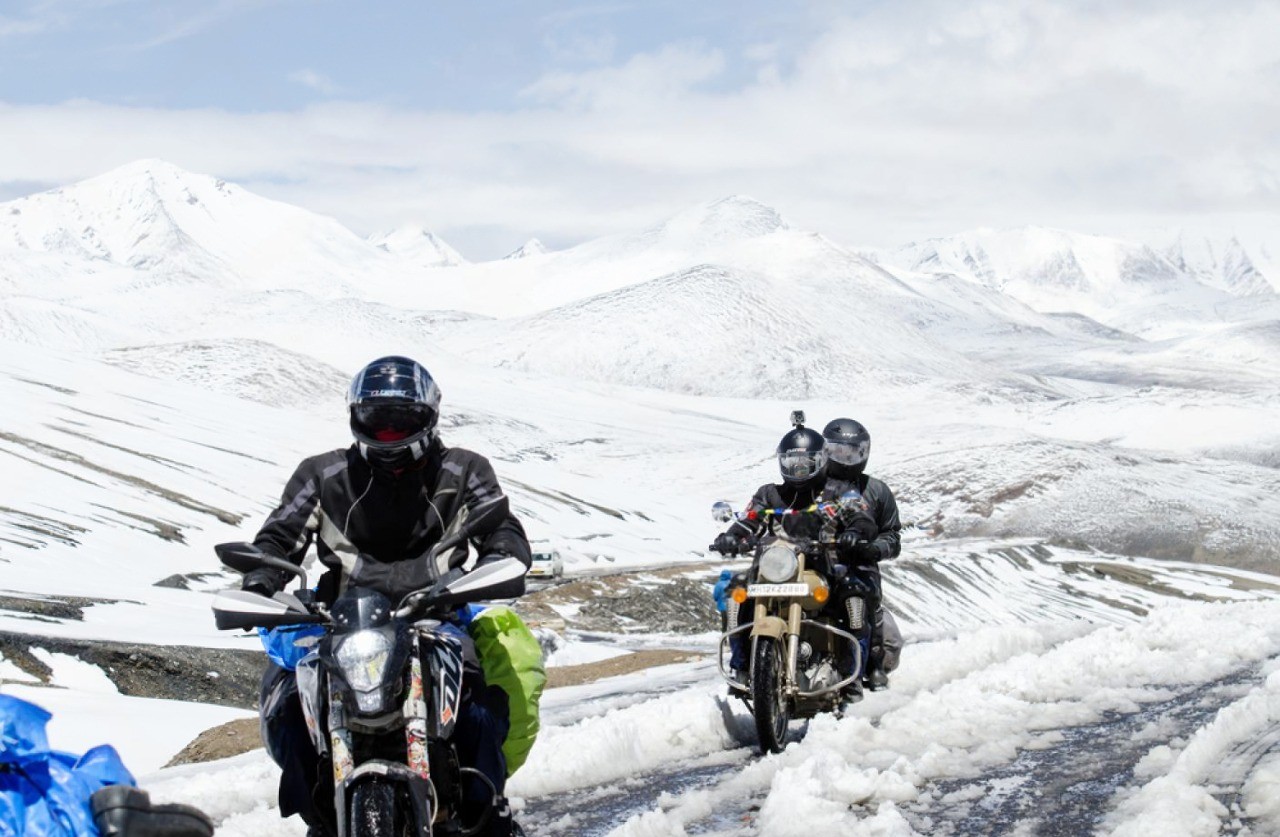
With those general principles in mind, let’s look at some gear we’ve tested that makes winter riding not just bearable, but downright comfortable.
Best Heated Jacket: Gerbing 12V 2.0 Heated Jacket Liner
Why We Love It: When the temperature dips below freezing, a heated jacket becomes more than a luxury — it’s your lifeline. The Gerbing 12V 2.0 Heated Jacket Liner uses seven Microwire heating zones across the chest, back, sleeves and collar, spreading warmth evenly without creating hot spots. The micro‑fibres heat up quickly and draw power from your bike’s 12‑volt system, so you never have to worry about running out of battery mid‑ride. Plug it into your motorcycle, adjust the heat controller (sold separately) and you’re toasty within seconds.
The liner itself is made from a durable mini‑ripstop nylon shell with low‑profile elastic cuffs and a drop‑tail back to keep drafts out. Reflective details help keep you visible, and YKK zippers ensure reliable closures in icy conditions. Importantly, Gerbing includes pre‑wired connections at the cuffs for heated gloves and integrates the wiring neatly so there are no dangling cables. The liner draws 77 watts at full blast and can reach temperatures up to 135°F (57°C).
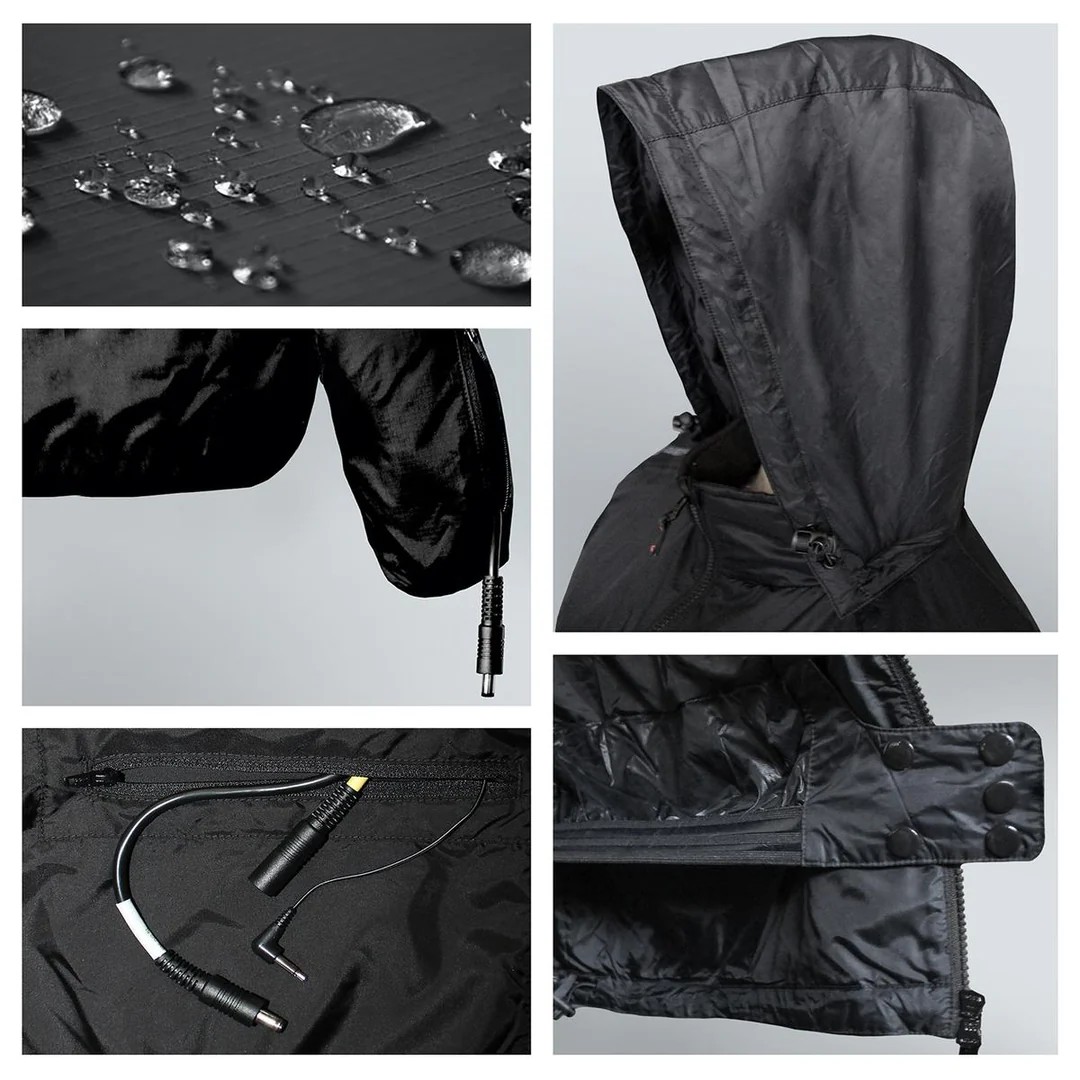
Silver Lining: The downside? You’re tethered to your bike. When you hop off to gas up, you’ll need to disconnect the power lead. Gerbing’s modular cables make this painless, and for those who want freedom, the company sells battery‑powered vests. But for long rides where you don’t want to worry about charging, the bike‑powered 12V 2.0 is unbeatable.
Riding Scenario : If you’re commuting on a cold January morning or doing multi‑day tours through the mountains, this liner keeps your core warm so your body doesn’t divert blood from your extremities. Because it’s slim, it fits under virtually any riding jacket — you don’t look like the Michelin man. Combine it with heated gloves for a totally integrated system, and you’ll stay comfortable on rides that would otherwise freeze you to the bone.
Stay warm on winter rides with fast-heating zones across your core, arms, and collar. Slim design fits under jackets for all-day comfort.
- Heats up quickly in seconds
- Connects with gloves, pants, socks
- Wind-resistant for added comfort
- Lifetime warranty on heating elements
- Controller sold separately
- Liner can ride up slightly
Insider Tip: Looking beyond one top pick? Explore our complete guide to the best heated jackets for every rider.
Best Heated Gloves: REV’IT! Liberty H2O Heated Gloves
Why We Love Them: Cold fingers are the first sign you need to bail on a winter ride, so proper gloves are critical. REV’IT! Liberty H2O Heated Gloves combine an advanced THERMOTRONIC heating system with high‑end protective features. Four heat settings (Eco 25%, Medium 50%, High 75%, Boost 100%) are controlled by a simple button, and a colored ring lets you know which mode you’re in. In our tests, the Eco mode lasted around 6.25 hours on a full charge, while Boost still gave us over two hours of warmth.
The outer shell blends softshell fabric with goatskin leather for flexibility and feel. Protective elements include a hard‑shell knuckle guard, Temperfoam palm and TPU palm slider to protect against impact and abrasion. An integrated Hydratex membrane keeps water out while allowing perspiration to escape, and high‑end insulation (Exkin Platinum and PrimaLoft Gold) traps heat without bulk. Charging takes about five hours, and the gloves automatically switch to sleep mode after 30 minutes of inactivity to preserve battery.
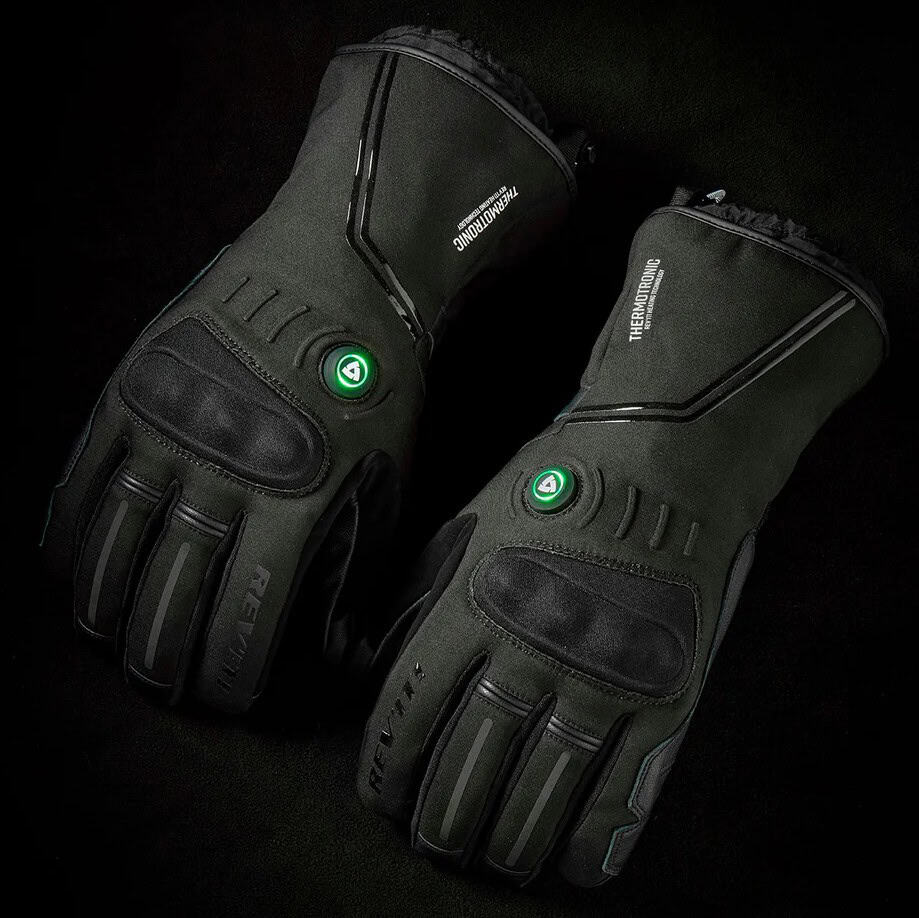
Silver Lining: Battery‑powered gloves can leave you with dead hands if you forget to charge them. REV’IT! mitigates this with long run times and clearly visible status lights. If you regularly ride all day in sub‑freezing temps, consider pairing these with Gerbing’s wired liner so you have unlimited power. But for most riders, the Liberty H2O’s flexibility and lack of cords are worth it.
Riding Scenario: These gloves are perfect for riders who don’t want to wire their hands to the bike or who switch between multiple motorcycles. They also work well off the bike for snowmobiling or hiking. The heating elements run along each finger, so your digits stay nimble when operating controls. The added bonus is the gloves’ robust armour; you’re not sacrificing safety for warmth.
Stay warm and protected in winter with waterproof, battery-powered heated gloves that balance safety, grip, and comfort.
- Warm even without heat activated
- Four heat levels with simple controls
- Waterproof and windproof protection
- Impact protection with strong grip
- Runs slightly large in sizing
- Takes hours to fully recharge
Insider Tip: Looking for more ways to beat the cold? Discover our full list of the best winter motorcycle gloves.
Best Adventure Boots: SIDI Adventure 2 Gore‑Tex Boots
Why We Love Them: Your feet rarely get enough credit, yet they’re what keep you upright when you come to a stop on icy pavement. SIDI Adventure 2 Gore‑Tex Boots are designed for serious ADV and touring riders who face wet, cold and muddy conditions. The key feature is a tall (14‑inch) Gore‑Tex gaiter that extends three inches higher than the previous model, keeping water and snow out while allowing your feet to breathe. Additional calf stretch panels and increased grip on the inner calf add comfort and control when standing on the pegs.
SIDI’s Single Flex System allows the boot to flex at the ankle while still offering solid lateral support. A tongue‑in‑groove Achilles protector has been refined to slim the profile but still shields your tendon. The non‑slip lug sole provides excellent grip on icy tarmac or muddy trails, and the micro‑adjustable cam‑lock buckles are replaceable for longevity. Full‑grain microfiber and nylon inner sole construction resist wear, and reflective panels above the heel boost visibility at night. They’re CE certified to EN13634:2017, meaning they meet rigorous safety standards.
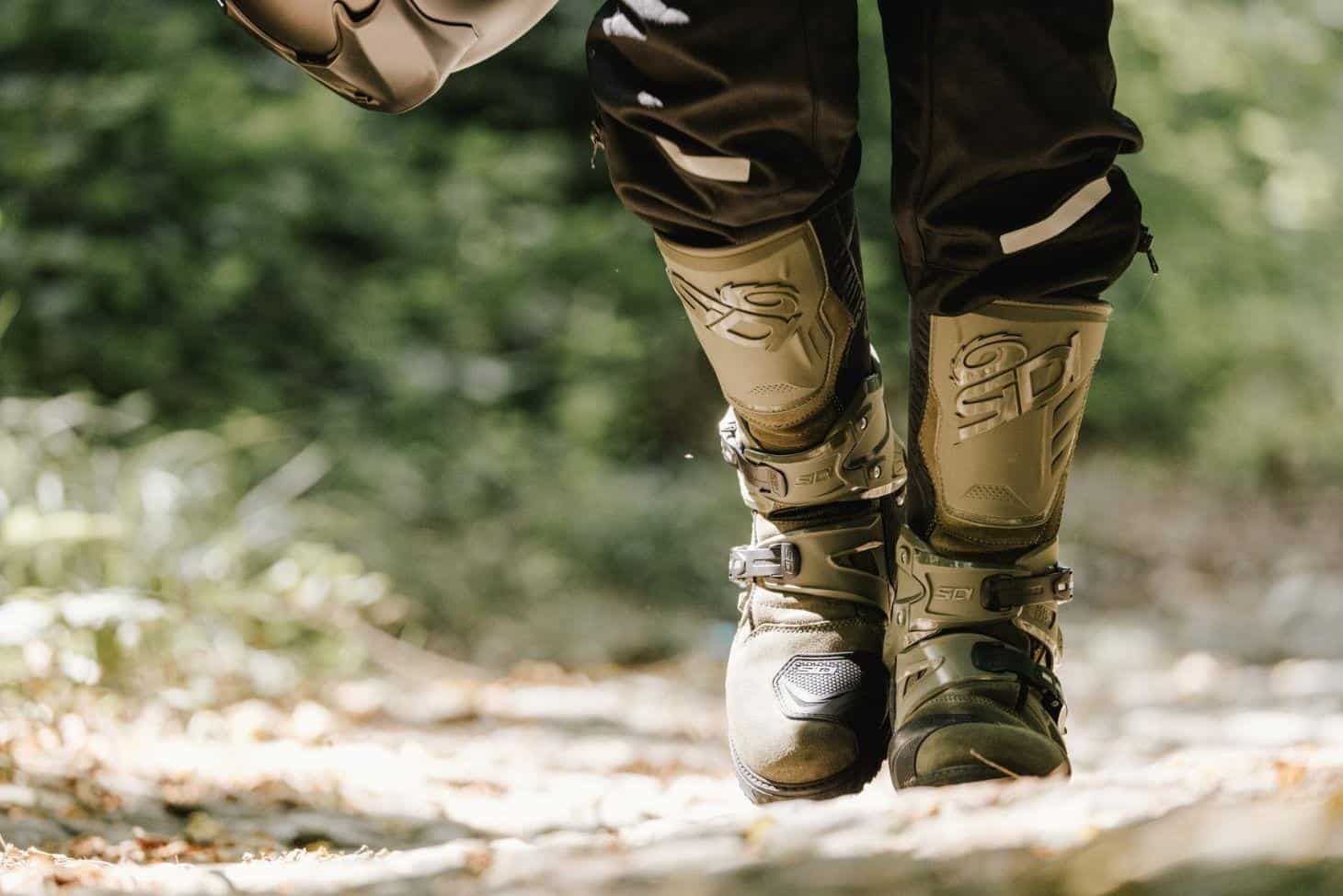
Silver Lining: At around $400, these boots aren’t cheap, and they’re heavier than some street boots. The upside is the durability and protection; many riders wear them for years in every season. If you prefer a lighter option, SIDI’s Aria Gore‑Tex boots offer similar waterproofing in a shorter package.
Riding Scenario: Commuting through rain, exploring gravel roads covered in frost or simply wanting maximum foot protection — these boots excel. The tall gaiter means snow doesn’t trickle in when you step in slush, and the flexible ankle design allows you to walk around comfortably once you’re off the bike. They pair perfectly with riding pants featuring a thermal liner for all‑day comfort.
Premium dual-sport boots delivering top-tier protection, lasting comfort, and reliable Gore-Tex waterproofing—ideal for long days in varied on‑ and off‑road conditions.
- Excellent waterproofing for wet conditions
- Strong protection like motocross boots
- Comfortable with little break-in time
- Grippy sole for pegs and walking
- Durable build for long-term use
- A bit stiff for extended walking
- Can feel warm in hot weather
Our Review: The Sidi Adventure 2 Gore-Tex Boots are also featured in our full roundup of the best motorcycle boots.
Best Base Layer Top: Alpinestars Ride Tech Winter Top
Why We Love It: A heated liner is great, but your base layer is what manages moisture and regulates temperature next to your skin. The Alpinestars Ride Tech Winter Top is designed specifically for cold‑weather motorcycle riding. It uses a honeycomb open mesh structure across the back and underarms to promote air circulation and moisture wicking. This keeps sweat from chilling you when you stop at a light.
The top provides compression fit to reduce muscle fatigue during long rides. Stretch ribs on the chest and shoulders allow for full range of motion without bunching under your jacket, and the knitted logos look good in the locker room but won’t show through your outer gear.
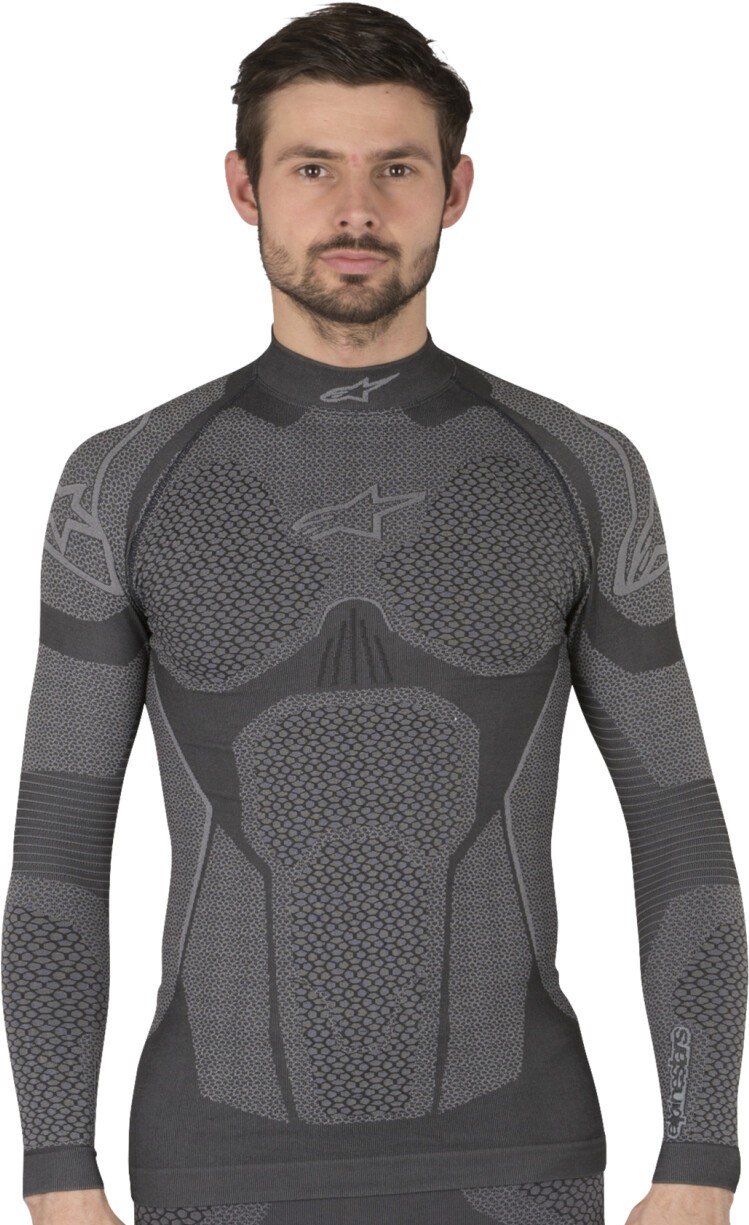
Silver Lining: Some riders find compression tops snug. Alpinestars offers a less compressive Ride Tech Top if you prefer a looser fit. The price is higher than generic thermals, but the motorcycle‑specific cut and moisture management justify it for serious riders.
Riding Scenario: Layer this under your heated jacket or touring jacket during winter rides, and you’ll stay dry even when exertion makes you sweat. It’s also versatile off the bike for skiing or cold‑weather runs. Because it’s thin, it doesn’t add bulk; you can still move freely when leaning into turns.
A high-performance winter base layer that traps heat, wicks away moisture, and uses compression fit to cut fatigue — great as your first defense against cold rides.
- Enhanced warmth in exposed zones via double-density fabric
- Compression cut helps reduce muscle vibration and fatigue
- Moisture wicking keeps you dry under jackets
- Seamless tubular design minimizes irritation and bulk
- Not quite enough thermal protection below ~5-10 °C without extra layers
- Stretch fit may feel snug if layering is needed underneath
Insider Tip: To get the most from a base layer like this, check out our guide on motorcycle layering for tips on pairing gear for cold-weather rides.
Best Modular Helmet for Winter: Shoei Neotec 3
Why We Love It: A full‑face helmet is non‑negotiable in winter. Wind chill at highway speeds can make a mild day feel like Siberia, and an integrated face shield protects your eyes from whipping sleet. The Shoei Neotec 3 is the latest generation of the renowned Neotec line. It features a composite Advanced Integrated Matrix (AIM) shell and multi‑density EPS liner to absorb impacts. The helmet has a built‑in drop‑down sun visor operated by a smooth slider; no more fumbling with sunglasses when the sun pops out.
Ventilation is critical for winter because your breath will fog the shield if there’s no airflow. Shoei places adjustable front vents and exhaust vents to create a balanced flow even at low speeds. The face shield is Pinlock‑ready and comes with an anti‑fog insert. A micro‑ratchet steel chin buckle makes it easy to secure the helmet with gloves on, and the Emergency Quick Release System allows first responders to remove the cheek pads without disturbing the head and neck.
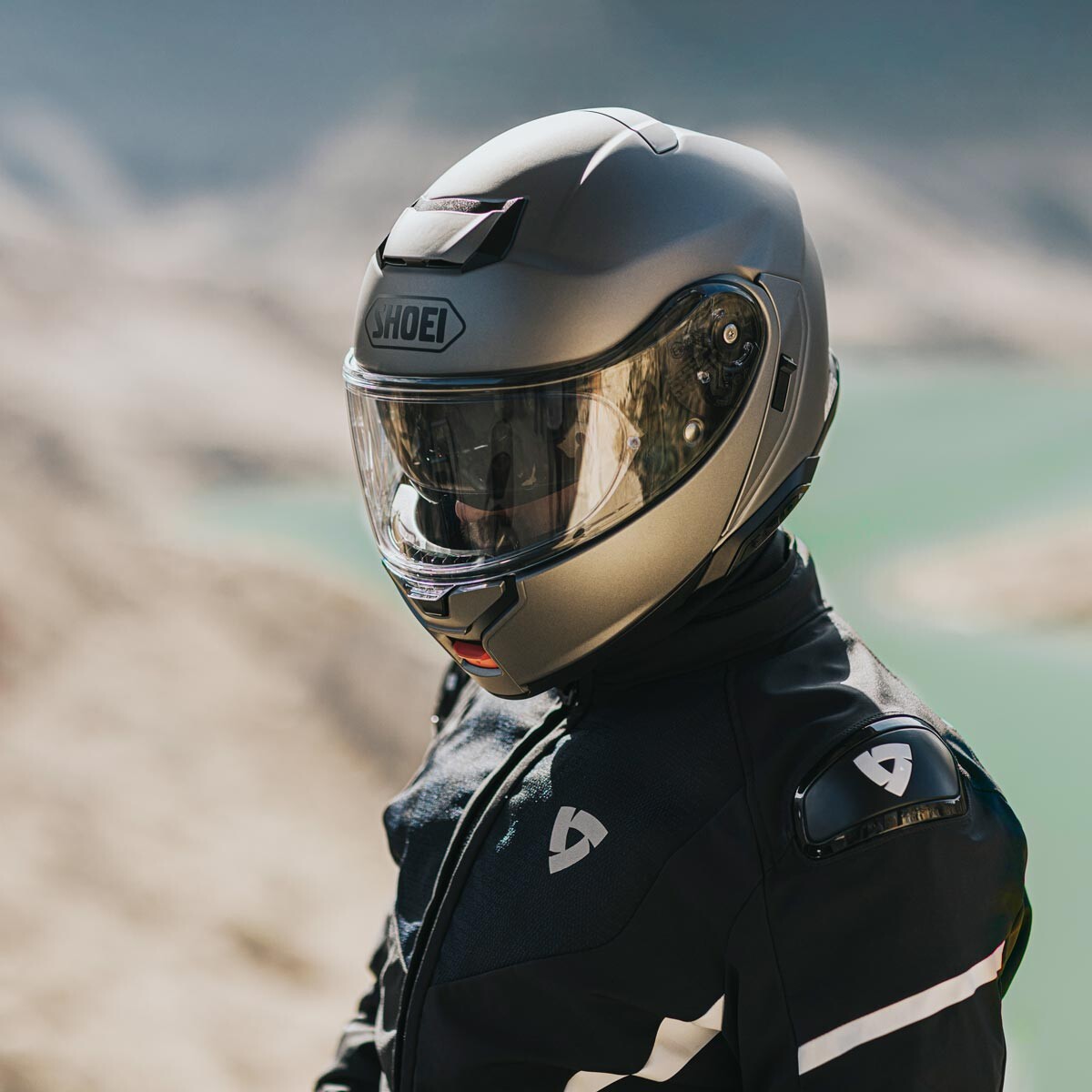
Silver Lining: Modular helmets weigh slightly more than pure full‑face designs due to the hinge mechanism. The Neotec 3 uses high‑quality materials to minimize this, and the convenience of flipping up the chin bar at fuel stops far outweighs the added ounces. If weight is a major concern, Shoei’s GT‑Air II offers similar ventilation with a fixed chin bar.
Riding Scenario: Commuters and tourers who wear glasses will appreciate the ability to open the chin bar at stop lights without removing the helmet. The integrated sun visor means you don’t need separate day and night shields, and the quiet ride reduces fatigue on long highway stretches. It’s also Bluetooth‑ready for communication systems, making it perfect for group rides.
A premium modular helmet built for long-distance comfort and low noise, with a smooth flip-up chin bar, tightly-sealing visor and wide drop down sun shade. Fits the SRL3 Sena comms system seamlessly.
- Comfortable wear all day
- Quiet, aerodynamic performance
- Flip-front convenience at stops
- Integrated comms & sun visor
- Faceshield lock is sometimes stiff
- Heavier weight may fatigue neck on long rides
Our Review: For a deep dive into every feature, check out our full Shoei Neotec 3 review here.
Best Budget Touring Jacket: Alpinestars Andes V4 Drystar Jacket
Why We Love It: Not every rider wants to spend a small fortune on winter gear. The Alpinestars Andes V4 Drystar jacket delivers four‑season performance at a reasonable price. Its abrasion‑resistant polyfabric outer shell houses a Drystar waterproof and breathable membrane that keeps rain out but allows moisture to escape. A removable long‑sleeve thermal liner lets you adapt to varying temperatures, and direct ventilation openings on the chest and back provide airflow when you heat up.
Protection is handled by removable elbow and shoulder armor, and the jacket has pockets for optional Nucleon chest and back protectors. It’s CE Class A certified and compatible with Alpinestars’ Tech‑Air airbag system for riders who want maximum safety. Comfort features include a soft‑edged collar, pre‑curved sleeves with stretch panels, and adjustable waist, collar, biceps, forearms and wrists for a tailored fit. Multiple pockets — including waterproof cargo pockets and a large external stash pocket on the lower back — carry winter essentials.
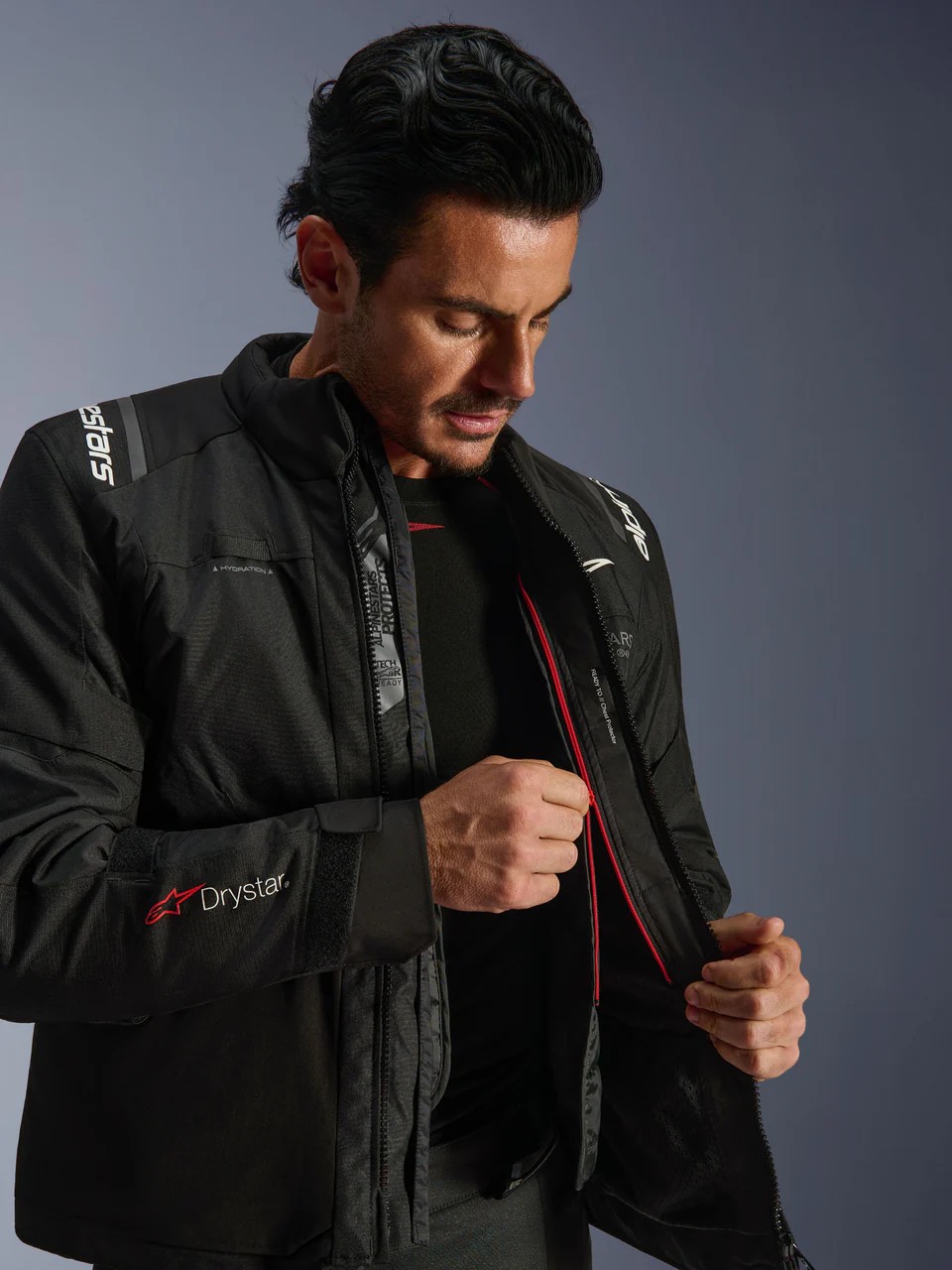
Silver Lining: The Andes V4 isn’t laminated; the waterproof membrane is a separate layer. This means the outer fabric can become saturated in prolonged rain before the membrane stops water from reaching you. The flip side is that the jacket is more flexible and typically more affordable than laminated Gore‑Tex alternatives.
Riding Scenario: Ideal for commuters and touring riders on a budget who still want year‑round capability. With the liner installed it’s cozy on cold mornings; remove it and open the vents, and you’re comfortable in spring or fall. Pair it with heated layers for winter, and you have a versatile setup that won’t break the bank.
A rugged dual-season adventure touring jacket that balances airflow and waterproof protection using a detachable Drystar membrane — made to handle both heat and downpours with confidence.
- Strong ventilation flow
- Removable waterproof liner
- Reinforced impact zones
- Comfortable touring fit
- Collar can leak in heavy rain
- Fit runs slightly snug
Our Review: We don’t have a dedicated review for the Alpinestars Andes V4 Drystar Jacket yet, but you can explore other waterproof motorcycle jackets in our guide.
Best Premium Touring Jacket: Rukka R‑Ex Jacket
Why We Love It: If you want a jacket that will last for years and shrug off the worst weather, look to Rukka’s R‑Ex. This Finnish brand is known for high‑quality Gore‑Tex construction, and the R‑Ex is no exception. It uses a 600D Cordura outer shell laminated to a wind‑ and waterproof Gore‑Tex membrane, so water beads off instead of soaking the fabric. CE‑level 2 Rukka D3O XTR armor in the shoulders and elbows comes standard, and pockets allow you to add a back protector and chest protectors.
Comfort touches include soft neoprene in the collar, adjustable width on the upper arms, adjustable hem and cuffs, and a long connecting zipper for pants. There are two waterproof external pockets and two internal pockets for your essentials. Rukka stands behind the product with a five‑year warranty against material or workmanship defects.
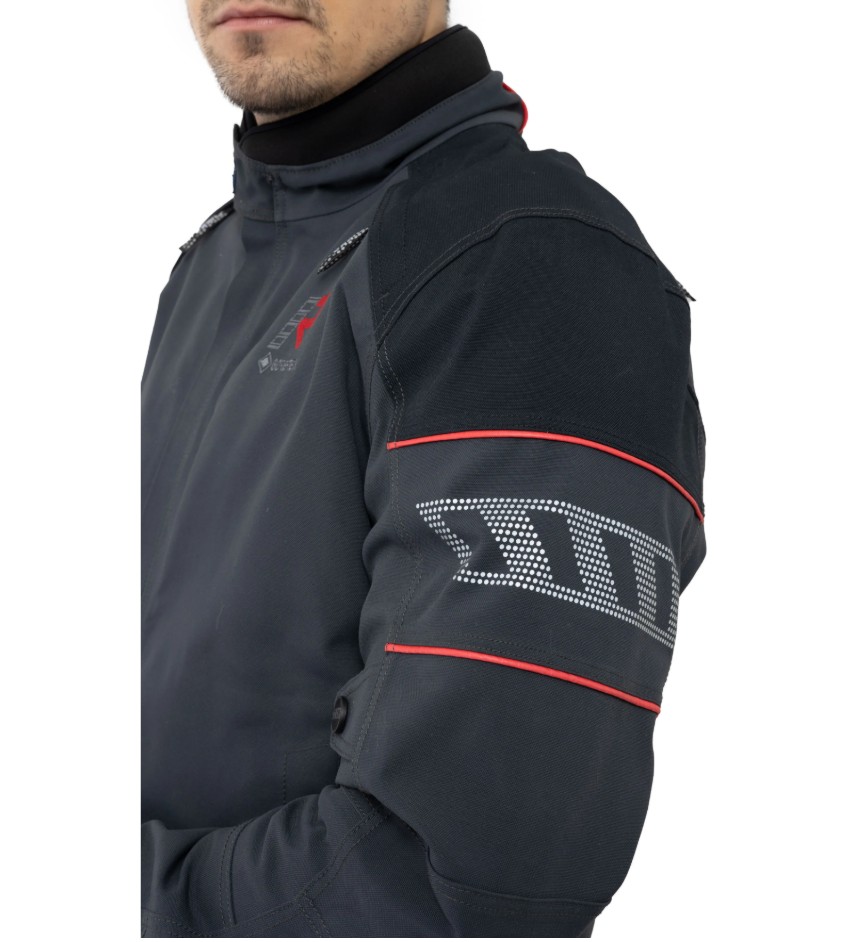
Silver Lining: The R‑Ex is one of the pricier jackets on the market, and because it’s laminated, ventilation can be limited in very hot climates. But you’re buying top‑tier protection and weatherproofing. For more airflow at the expense of some durability, consider the Klim Latitude, which uses a mix of Gore‑Tex Performance Shell and stretch panels for mobility.
Riding Scenario: Long‑distance commuters and tourers who ride rain or shine will appreciate the R‑Ex’s reliable waterproofing and high‑end armor. Because the membrane is laminated, the jacket doesn’t get heavy when wet, and it dries quickly. Pair it with a heated liner in winter and a cooling vest in summer for truly four‑season capability.
Built for serious touring, the Rukka R-Ex is a rugged Gore-Tex-laminated, waterproof jacket that offers top protection and adjustability without bulk — ideal for wet-weather rides year-round.
- Durable Gore-Tex laminate
- Good ventilation panels
- Soft neoprene collar
- Includes CE Level 2 armor
- Heavy for warm climates
- Less flexible for layering
Insider Tip: Looking for alternatives? Explore more options in our guide to the best motorcycle jackets.
Best Winter Accessory: Oxford Heaterz Premium Adventure Heated Grips
Why We Love Them: Even the best gloves can’t always overcome bone‑chilling air rushing over your bars. Heated grips warm the palms of your hands directly through the handlebars, giving you full freedom to use any glove and still feel the warmth. Oxford Heaterz Premium Adventure Heated Grips are a popular choice because they’re reliable and easy to install. The grips feature five heat settings with an intelligent controller to prevent battery drain. You can adjust the temperature on the fly with gloves on.
The grips are ergonomically engineered with textured rubber to enhance grip and reduce vibration. Oxford’s design includes intelligent battery protection so the system will turn off if the voltage drops too low. They’re designed for adventure bikes but fit most standard handlebars and include all mounting hardware.
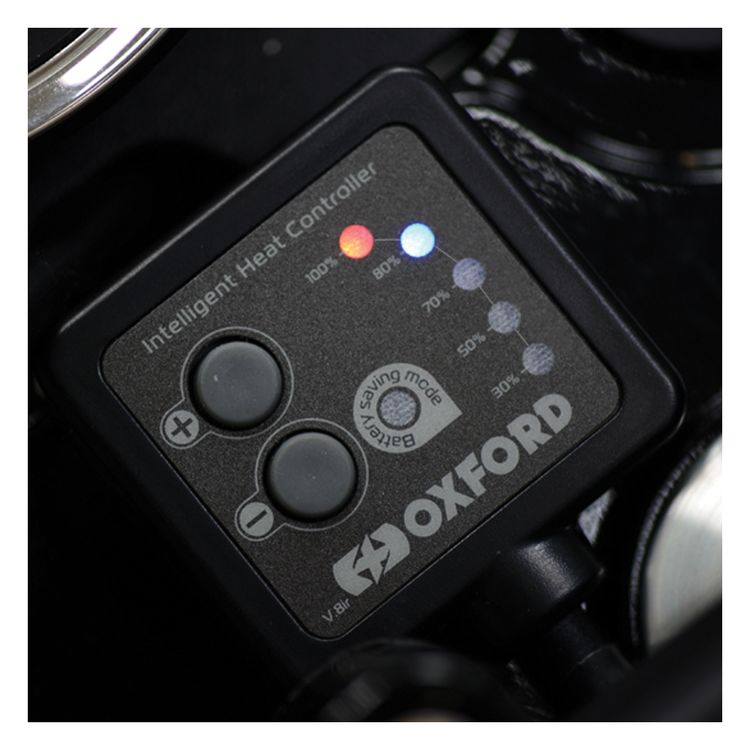
Silver Lining: Installing heated grips requires wiring into your bike’s electrical system. Oxford includes clear instructions and all necessary components, but if you’re uncomfortable with DIY, a shop can do the job in about an hour. Once installed, the convenience is worth the effort. For riders who prefer not to modify their bars, heated gloves (like the Liberty H2O) remain an excellent alternative.
Riding Scenario: Heated grips shine for commuters and touring riders who ride in varying temperatures. Start your morning commute on the highest setting to warm your hands, then lower the heat as the day warms up. Unlike heated gloves, grips never need recharging and work with any glove you own, making them a great long‑term investment.
Our Review: We don’t have a dedicated review for the Oxford Heaterz Premium Adventure Heated Grips yet, but you can explore more motorcycle accessories to upgrade your ride.
Comparison Table
| Product | Best For / Description | Key Features | Approx. Price (USD)** |
|---|---|---|---|
| Gerbing 12V 2.0 Heated Jacket Liner | Riders who want unlimited heat from their bike’s power | 7 Microwire heating zones; mini‑ripstop nylon shell; reflective details; pre‑wired glove connections | ~$280 |
| REV’IT! Liberty H2O Heated Gloves | Battery‑powered heated gloves with armor | THERMOTRONIC heating system; 4 modes with colored indicator; Exkin Platinum & PrimaLoft insulation; hard knuckle and palm protection; Hydratex waterproof liner | ~$360 |
| SIDI Adventure 2 Gore‑Tex Boots | Adventure and touring riders needing tall, waterproof boots | 14‑inch Gore‑Tex gaiter; Single Flex System; grippy lug sole; adjustable cam‑lock buckles; CE certified | ~$400 |
| Alpinestars Ride Tech Winter Top | Base layer for moisture management and compression | Honeycomb open mesh back for breathability; compression fit; stretch ribs for mobility | ~$100 |
| Shoei Neotec 3 Helmet | Modular helmet with premium safety and ventilation | AIM shell; multi‑density EPS; integrated sun visor; Pinlock‑ready shield; adjustable vents; micro‑ratchet buckle | ~$800 |
| Alpinestars Andes V4 Drystar Jacket | Affordable four‑season touring jacket | Abrasion‑resistant polyfabric; Drystar waterproof membrane; removable thermal liner; chest and back vents; removable elbow & shoulder armor; Tech‑Air compatible | ~$350 |
| Rukka R‑Ex Jacket | Premium laminated Gore‑Tex touring jacket | 600D Cordura shell; Gore‑Tex laminated membrane; CE‑level 2 D3O shoulder & elbow armor; neoprene collar; adjustable cuffs; 5‑year warranty | ~$900 |
| Oxford Heaterz Premium Adventure Heated Grips | Riders seeking handlebar‑mounted heat | Five heat settings; intelligent battery protection; ergonomic grip pattern | ~$160 |
**Prices are approximate retail as of September 2025 and may vary depending on sales and retailers.
Buying Guide: Choosing Gear for Your Winter Ride
Match Gear to Your Riding Style
Different types of riding require different gear priorities. If you’re mostly commuting short distances, battery‑powered heated gloves and a waterproof over‑jacket may be all you need. Long‑distance tourers benefit from bike‑powered heated jackets, modular helmets for convenience and tall boots for weather protection. Adventure riders should prioritize waterproof boots, a laminated jacket and durable gear that can handle mud and snow.
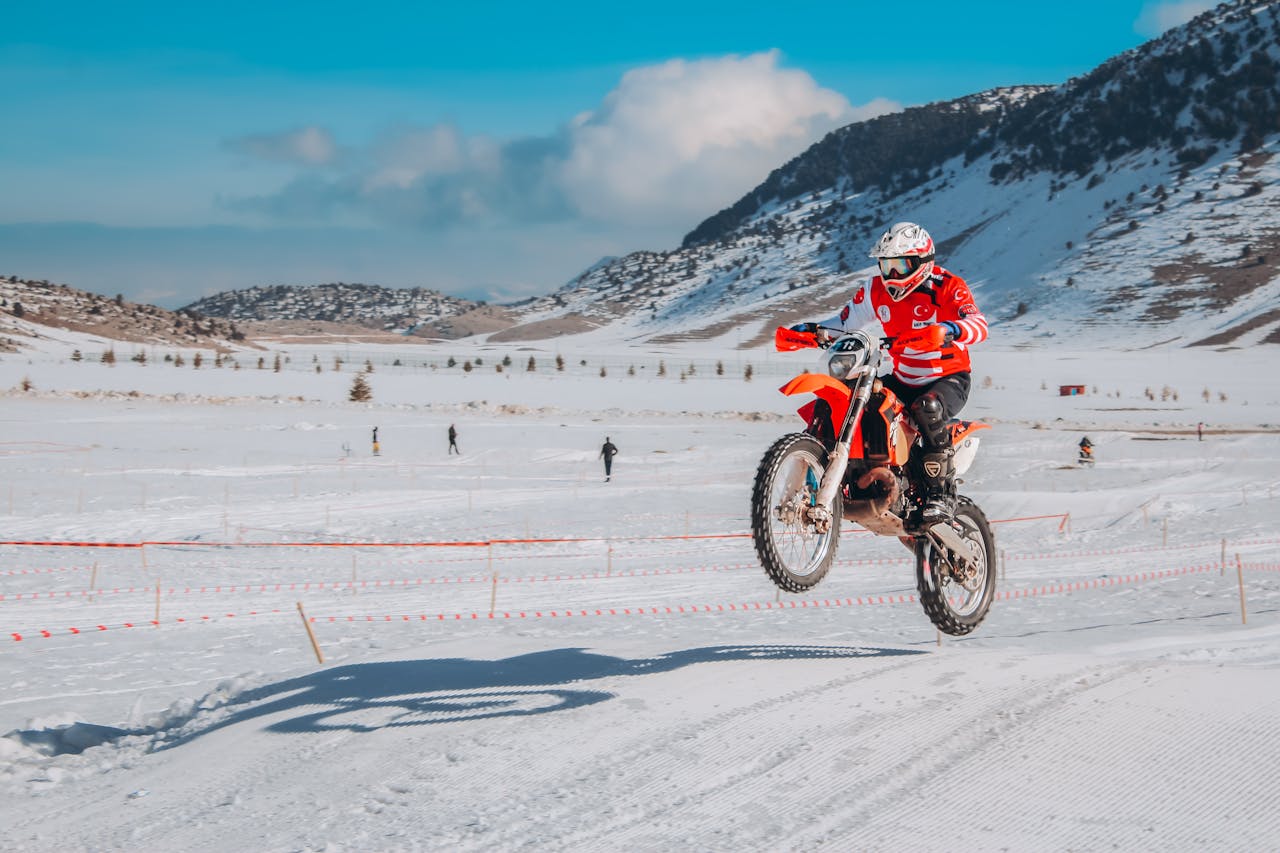
Layering Strategy
Layering is about balancing warmth, moisture management and flexibility. Start with a wicking base layer like the Alpinestars Ride Tech Winter Top to keep sweat off your skin. Add an insulating mid‑layer (fleece or a down liner) if you’re not using heated gear. Finish with a waterproof shell like the Andes V4 or Rukka R‑Ex to block wind and rain. Heated gear can replace the mid‑layer, allowing you to adjust warmth on the fly.
Helmet Considerations
Pick a helmet with good ventilation and anti‑fog features. Look for a Pinlock‑ready visor or built‑in fog‑resistant technology. Modular helmets like the Neotec 3 are convenient for winter because you can open the chin bar at stops without removing the helmet and letting cold air rush in. Make sure your helmet fits snugly with your balaclava or winter liner.
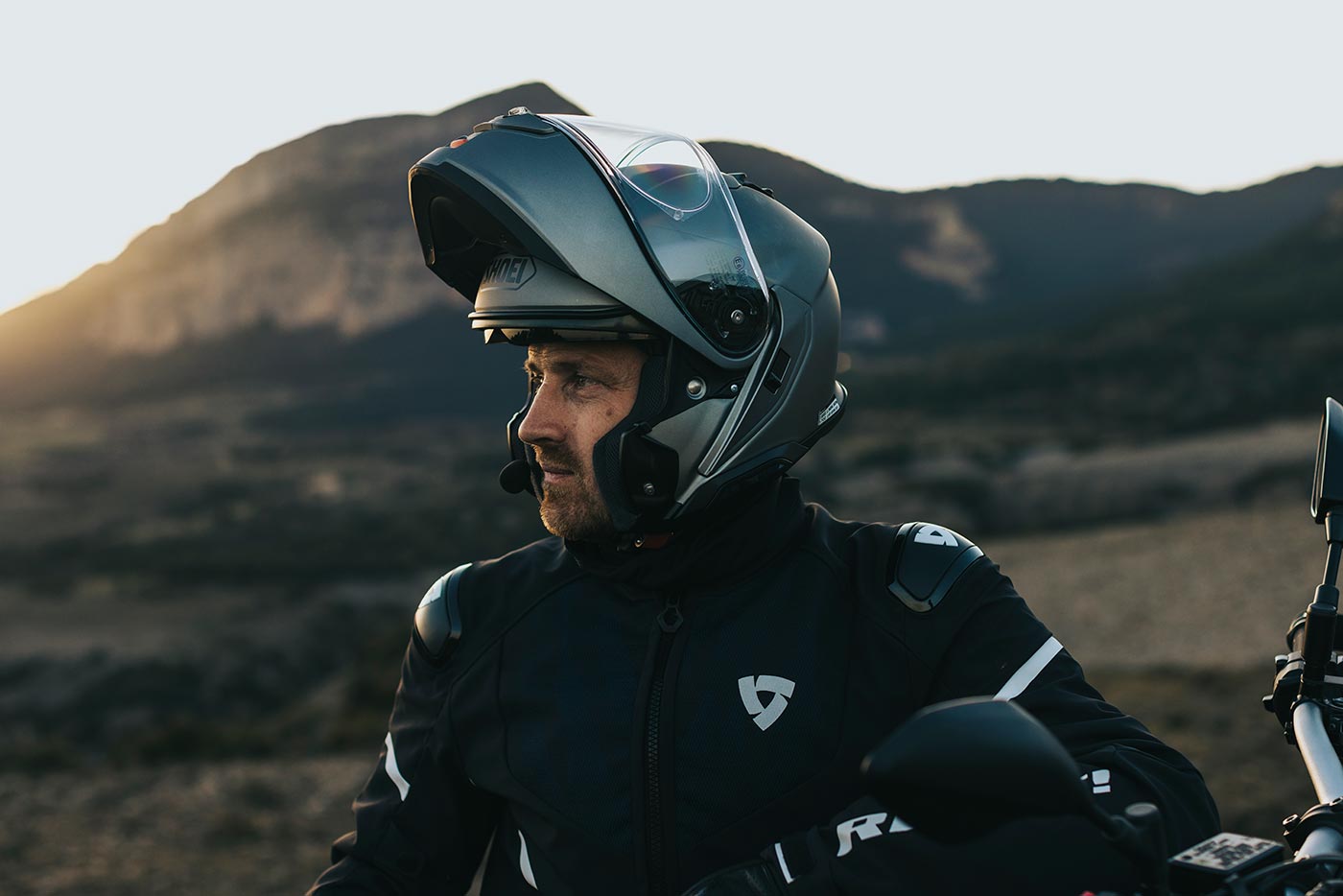
Footwear and Gloves
Feet and hands suffer first in cold weather. Choose boots with a waterproof membrane and enough height to overlap your pants. Look for gaiters and adjustable closures to keep snow out. Gloves should be insulated, waterproof and long enough to fit over jacket sleeves. Heated gloves or grips are worth the investment if you ride regularly in temperatures below 40°F (4°C).
Visibility
Winter often means riding in low light and through precipitation. Add reflective elements to your gear and bike; the Rukka R‑Ex and Gerbing liner both have reflective accents. Consider auxiliary LED lights and always keep your visor clean. Clear, yellow or light‑tint visors improve contrast in foggy or snowy conditions.
Maintenance and Preparation
Cold weather is hard on machinery. Regularly check tire pressures (they drop in cold), lubricate cables, and wash the bike often to remove salt and road grime. Carry a small toolkit, tire repair kit and emergency blanket; getting stranded in winter is no joke. And of course, check the weather. Even the best gear can’t compensate for ice storms or whiteouts.
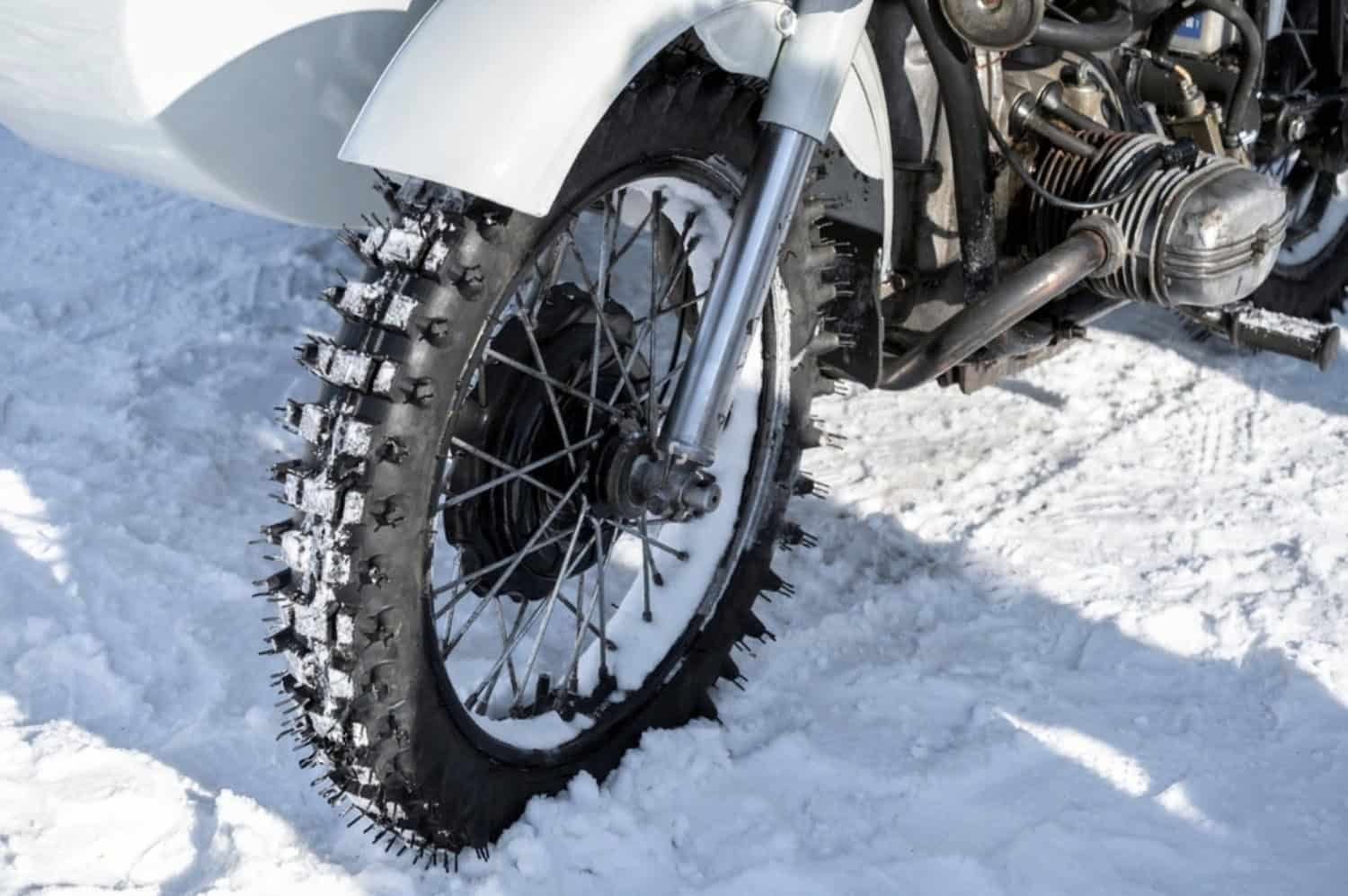
Final Thoughts
Riding through winter isn’t about suffering; it’s about embracing a different kind of freedom. Roads are quieter, scenery is starkly beautiful, and there’s a sense of accomplishment in arriving somewhere warm after carving through frosty air.
With modern gear — from heated jackets and gloves to waterproof boots, modular helmets and premium jackets — you can stay comfortable and confident when temperatures plummet.
Always remember that no piece of equipment replaces good judgment. If you’re ever unsure about conditions, there’s no shame in taking the car or staying home. But with a well‑prepared bike, smart layering and the right gear from reputable brands like Gerbing, REV’IT!, SIDI, Alpinestars, Shoei, Rukka and Oxford, winter riding opens up a whole new season of adventures.
Stay warm, ride safe, and we’ll see you on the road.
Related

Best Electric Motorcycles of 2025 – A Rider‑Focused Guide
Discover the best electric motorcycles of 2025—street, dirt, and dual-sport rides with real power, long range, and instant torque thrills.

